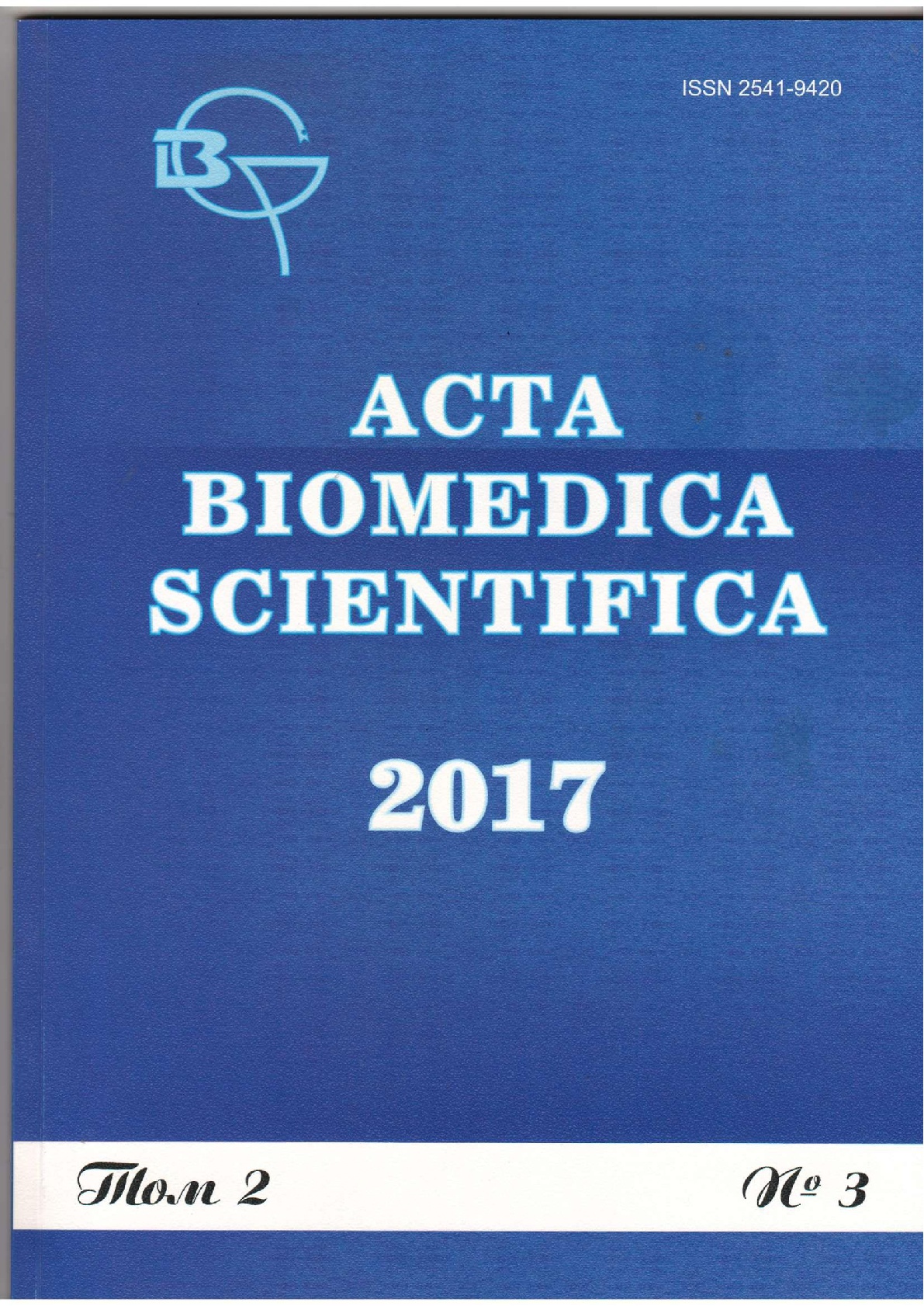Irkutsk, Irkutsk region, Russian Federation
The male factor is the cause of infertility in 40 % of cases. This study is dedicated to the efficiency assessment of ICSI and PICSI techniques and the determination of indications of these methods. There are some relative indications for ICSI in clinical practice: advanced reproductive age of patients, a small number of obtained oocytes, prolonged infertility, repeated attempts of in vitro fertilization. However, normal sperm values are registered in 71.3 % of cases. PICSI method is more preferable at high level of DNA fragmentation and associated changes in sperm indicators. Nevertheless, the pregnancy rate after these methods was comparable – 19.3 % and 19.7 % respectively. The results indicate that the ICSI and PICSI methods do not have a negative impact on the quality of the embryos and do not increase the pregnancy rate.
ICSI, PICSI, in vitro fertilization, pregnancy rate
1. Sukhikh GT, Nazarenko TA (еd.) (2010). Infertile marriage. Modern approaches to diagnostics and treatment: Manual [Besplodnyy brak. Sovremennye podkhody k diagnostike i lecheniyu: rukovodstvo], 784.
2. Gontar’ YV, Chaplya OV, Il’in IE (2012). A comprehensive analysis of the sperm genetic apparatus in patients taking part in the assisted reproductive technologies program [Kompleksnoe issledovanie geneticheskogo apparata spermatozoidov patsientov, vstupayushchikh v programmu vspomogatel’nykh reproduktivnykh tekhnologiy]. Tavricheskiy mediko-biologicheskiy vestnik, 15 (3-2), 84-86.
3. Dedov II, Makarova NP, Vityazeva II, Bogolyubov SV (2010). Sperm morphology affecting the efficiency of ICSI method (clinical lecture) [Morfologicheskie struktury spermatozoida, vliyayushchie na effektivnost’ oplodotvoreniya metodom IKSI (klinicheskaya lektsiya)]. Problemy reproduktsii, (3), 64-67.
4. Krasnopol’skaya KV, Nazarenko TA (2014). Clinical aspects of the infertility treatment in marriage. Diagnostics and treatment programs: Manual [Klinicheskie aspekty lecheniya besplodiya v brake. Diagnostika i terapevticheskie programmy: rukovodstvo], 376.
5. Nikiforov OA, Lomeyko EA, Lomaka SV, Lavysh IA (2014). Male infertility: topical problems of physiology, etiopathogenesis and diagnostics of male reproductive system disorders [Muzhskoe besplodie: aktual’nye voprosy fiziologii, etiopatogeneza i diagnostiki narusheniy reproduktivnoy sistemy u muzhchin]. Zaporozhskiy meditsinskiy zhurnal, (4), 69-76.
6. Popenko AN (2013). Analysis of the efficiency of ICSI method [Analiz effektivnosti vspomogatel’nykh reproduktivnykh tekhnologiy metodom intratsitoplazmaticheskoy injektsii spermatozoida]. Vestnik Chelyabinskogo gosudarstvennogo universiteta, (7), 142-144.
7. Shamraev SN, Rutinskiy AI, Babyuk IA (2012). Molecular cytogenetic analysis of infertile men sperm using fluorescent in situ hybridization. [Molekulyarnyy tsitogeneticheskiy analiz spermatozoidov u besplodnykh muzhchin metodom flyuorestsentnoy gibridizatsii]. Mediko-sotsial’nye problemy sem’i, 17 (3-4), 111-114.
8. Shmitova NS, Nazarenko RV, Bednik DY, Zdanovskiy VM (2014). Role of teratozoospermia in the as assisted reproductive technology program failures [Rol’ teratozoospermii v neudachakh programm vspomogatel’nykh reproduktivnykh tekhnologiy]. Doktor.Ru, 8 (1), 10-17.
9. Check JH, Bollendorf A, Summers-Chase D, Yuan W, Horwath D (2013). Isolating sperm by selecting those with normal nuclear morphology prior to intracytoplasmic sperm injection (ICSI) does not provide better pregnancy rates compared to conventional ICSI in women with repeated conception failure with in vitro fertilization. Clin. Exp. Obstet. Gynecol., 40 (1), 15-17.
10. Demir B, Arikan II, Bozdag G, Esinler I et al. (2012). Effect of sperm morphology on clinical outcome parameters in ICSI cycles. Clin. Exp. Obstet. Gynecol., 39 (2), 144-146.





